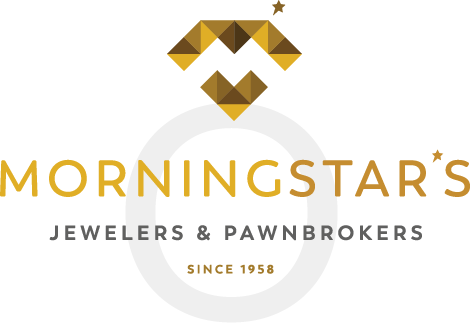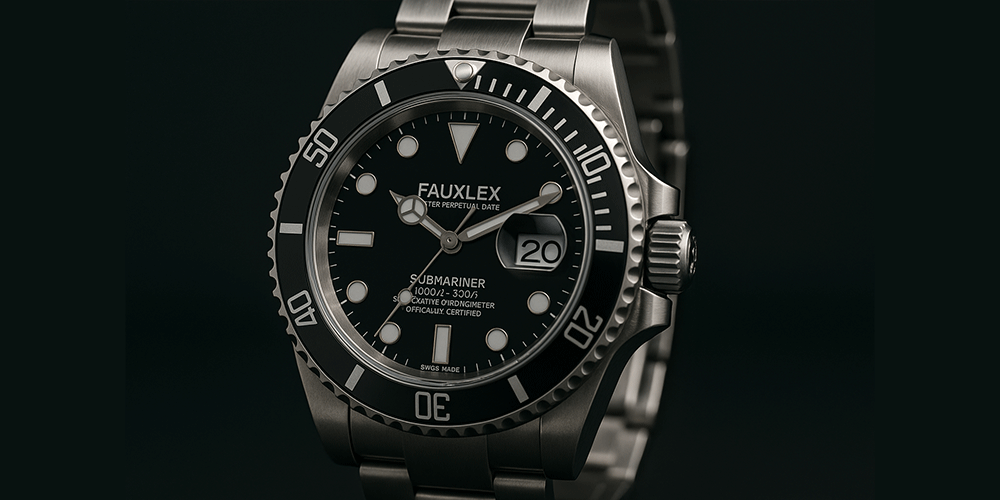Comment repérer une fausse montre de luxe : le guide du collectionneur
Dans un marché en plein essor rempli de collectionneurs, d'investisseurs et d'acheteurs à la pointe de la mode, les montres de luxe sont plus que des accessoires — ce sont des actifs tangibles et des symboles de statut. Avec la demande croissante pour les montres de luxe d'occasion à vendre, les contrefacteurs sont devenus plus sophistiqués. Si vous n'êtes pas vigilant, vous pourriez confondre une réplique avec l'original et perdre des milliers.
Que vous lorgniez une Rolex Submariner d'occasion ou une Cartier Santos, voici comment identifier une contrefaçon et faire un achat confiant et éclairé.
Le luxe à portée de main — Achetez des montres d'occasion
Découvrez des garde-temps authentiques et haut de gamme. Chaque montre est inspectée pour sa qualité et soutenue par la confiance.
Parcourir les montres d'occasion1. Vérifiez les numéros de série et de modèle
Chaque montre de luxe authentique possède un numéro de série unique et un numéro de modèle (ou de référence), souvent gravés dans une typographie précise et cohérente. Ces numéros :
- Correspondre aux papiers d'origine ou à la base de données du fabricant
- Doit être gravé profondément et proprement — pas gravé à l'acide ou imprimé
- Sur les montres Rolex, par exemple, le numéro de série se trouve souvent entre les cornes ou sur le rehaut
Conseil : Si les numéros sont absents, peu profonds ou irréguliers, c'est un signal d'alarme majeur.
Détails supplémentaires : Différentes marques placent les numéros de série et de modèle à des endroits variés. Par exemple, Omega grave souvent les numéros au dos du boîtier ou à l'intérieur du fermoir du bracelet. Lorsque c'est possible, recoupez ces numéros avec les registres officiels de la marque ou des services d'authentification tiers pour confirmer leur validité. Méfiez-vous des contrefacteurs qui utilisent de faux papiers ou des numéros de série non correspondants.
2. Étudiez le cadran et les marquages
Les marques de luxe sont obsédées par la précision du design. Les contrefaçons ratent souvent la cible sur :
- Espacement ou alignement de la police
- Placement ou proportions du logo
- Grossissement de la fenêtre de date (par exemple, la lentille Cyclope de Rolex)
Sous grossissement, les vraies montres affichent un texte, un logo et des index parfaits. Une impression floue, un lume bâclé ou des polices incorrectes sont des signes révélateurs d'une réplique.
Astuce de pro : Comparez la montre en question avec des images haute résolution du site officiel de la marque ou du catalogue. Notez des détails comme la couleur et la finition du cadran (soleil, mat, brillant) et la forme exacte des index et des aiguilles, car ces détails subtils sont difficiles à reproduire.
3. Ressentez le poids et les matériaux
Les montres de luxe authentiques sont fabriquées à partir de matériaux solides et haut de gamme : acier inoxydable, or, platine, cristal de saphir. Elles ont tendance à être plus lourdes et plus robustes que les contrefaçons.
Signes d'avertissement d'une contrefaçon :
- La montre semble légère ou fait du bruit
- Les maillons du bracelet semblent creux ou irréguliers
- Le matériau ou la finition du fond de boîte semble bon marché ou décoloré
Par exemple, une Rolex Submariner pèse généralement environ 150 grammes. Si elle semble très légère, elle n’est probablement pas authentique. De plus, les montres authentiques utilisent des alliages et matériaux de haute qualité qui résistent à la corrosion et à l’usure, tandis que beaucoup de contrefaçons utilisent des métaux plaqués ou de l’acier de moindre qualité sujet à la décoloration.
4. Inspecter le Mouvement
C’est là que les contrefaçons sont le plus souvent démasquées.
Une montre mécanique authentique présente une trotteuse fluide et continue (surtout pour des marques comme Rolex, Omega ou Patek Philippe). Les répliques à quartz ont tendance à avoir un tic-tac net.
Encore plus révélateur est le mouvement interne :
- Les marques de luxe utilisent des mouvements maison ou certifiés suisses
- Un fond de boîte transparent (sur des marques comme Omega ou Grand Seiko) doit révéler des composants précis et décorés
- Les mouvements bon marché ont souvent un aspect simple, non poli ou produit en masse
À moins d'être expérimenté, faites ouvrir le fond de boîte par un horloger certifié et examinez le mouvement. Cette étape est cruciale car certaines montres contrefaites paraissent convaincantes extérieurement mais utilisent des mouvements génériques de basse qualité.
5. Vérifier le Cristal et le Cyclope
Les montres de luxe utilisent un cristal en saphir résistant aux rayures. Essayez le test de la goutte d'eau : une goutte sur un cristal en saphir formera une perle serrée, tandis que sur du verre minéral, elle s'aplatit et s'étale.
Pour des marques comme Rolex :
- La lentille Cyclope sur la date doit grossir 2,5x, pas 1,5x
- Une amplification mal alignée ou faible est courante dans les contrefaçons
Notez que certains contrefacteurs tentent de falsifier les cristaux en saphir mais échouent souvent sur la dureté et la clarté. Tester la dureté du cristal avec des outils spécialisés ou une évaluation experte peut aider.
6. Évaluer le Lume
Les montres de luxe authentiques—en particulier les modèles de plongée ou d'aviation—utilisent un lume de haute qualité (comme Super-LumiNova ou Chromalight). Il doit :
- Brillent intensément et uniformément dans l'obscurité
- Se chargent rapidement sous lumière naturelle ou UV
Les fausses montres bon marché peuvent avoir un lume faible, irrégulier ou inexistant. Un test rapide dans l'obscurité peut révéler beaucoup. De plus, le lume authentique a une couleur et une durée constantes ; une lueur inégale ou des changements de couleur peuvent indiquer des pièces contrefaites ou des réparations de mauvaise qualité.
7. Examinez attentivement le fond de boîte
Les marques de luxe utilisent rarement des fonds de boîte gravés à moins que ce soit spécifique au modèle. Par exemple :
- Rolex a généralement un fond de boîte solide et simple
- Panerai et Omega peuvent utiliser des fonds de boîte transparents avec des inscriptions détaillées
Si le fond de boîte présente un marquage excessif, des hologrammes, ou est transparent alors qu'il ne devrait pas l'être, cela peut être un signal d'alarme. Vérifiez les signes de fonds de boîte de rechange ou aftermarket, souvent différents par la finition ou la qualité de gravure.
8. Emballage et papiers d'origine
Bien que toutes les montres d'occasion ne soient pas accompagnées de leur boîte et papiers d'origine, les avoir :
- Augmente la valeur de revente de la montre
- Confirme l'origine de l'achat
- Correspond aux numéros de série/modèle de la pièce
L'absence de documentation ne signifie pas toujours une contrefaçon, mais soyez particulièrement prudent—surtout pour les montres de grande valeur. Méfiez-vous des cartes de garantie modifiées ou falsifiées, détectables par des incohérences dans la qualité d'impression, les polices ou les hologrammes.
9. Achetez auprès de vendeurs réputés
La meilleure défense contre les contrefaçons est d'acheter auprès de sources fiables et établies. Recherchez :
- Revendeurs certifiés d'occasion
- Listes de produits détaillées avec photos macro
- Garanties d'authenticité écrites
- Politiques de retour et garantie
Évitez les annonces vagues sur eBay, les pages Instagram douteuses ou les « bonnes affaires » provenant de sources non vérifiées.
Astuce pro : Recherchez des détaillants membres d'organisations horlogères comme l'IWJG (International Watch & Jewelry Guild) ou la NAWCC (National Association of Watch & Clock Collectors).
10. Obtenez une expertise professionnelle
Toujours incertain ? Faites évaluer la montre par un horloger certifié indépendant ou un expert avant d'acheter — ou dans un délai de retour après l'achat.
- Demandez des rapports écrits détaillant l'authenticité et l'état du mouvement
- Trouvez des experts qui se spécialisent dans votre marque ou style de montre
- Soyez conscient des coûts typiques et des délais de traitement
Cette étape apporte la tranquillité d'esprit et protège votre investissement.
Dernières réflexions
Acheter une montre de luxe — surtout d'occasion — doit être une expérience passionnante et gratifiante. Mais dans un marché rempli de contrefaçons, rester vigilant est essentiel.
En vérifiant les numéros de série, en étudiant la qualité de fabrication, en examinant les mouvements et en travaillant avec des vendeurs de confiance, vous pouvez éviter des erreurs coûteuses et garantir que votre prochain achat est authentique.
Questions fréquemment posées
Comment puis-je vérifier les numéros de série et de modèle d'une montre de luxe ?
Vérifiez que la montre possède des numéros de série et de modèle profondément gravés, puis recoupez-les avec les archives officielles de la marque ou des services d'authentification fiables. Méfiez-vous des gravures superficielles ou absentes.
Quels sont les signes courants sur le cadran qui indiquent une montre fausse ?
Recherchez un espacement inégal des polices, des logos mal alignés, une impression floue, une couleur de luminescence incorrecte et une mauvaise amplification de la date. Les cadrans authentiques ont des détails parfaits sous grossissement.
Pourquoi le mouvement est-il important pour déterminer l'authenticité ?
Les montres de luxe authentiques possèdent des mouvements mécaniques précis avec des aiguilles des secondes à balayage fluide, souvent visibles à travers le fond de boîte. Les mouvements à quartz bon marché ou mal finis indiquent généralement une contrefaçon.
Comment tester si le verre de la montre et la loupe Cyclope sont authentiques ?
Effectuez le test de la goutte d'eau pour vérifier la présence d'un verre saphir ; les gouttes perlent étroitement sur le saphir. Pour des marques comme Rolex, la loupe Cyclope doit agrandir la date de 2,5x — une moindre amplification est un signal d'alarme.
Où devrais-je acheter des montres de luxe d'occasion pour éviter les contrefaçons ?
Achetez uniquement auprès de revendeurs réputés et certifiés offrant de fortes garanties d'authenticité, des politiques de retour claires et des avis clients vérifiés. Évitez les vendeurs non vérifiés sur les réseaux sociaux ou les annonces en ligne vagues.


